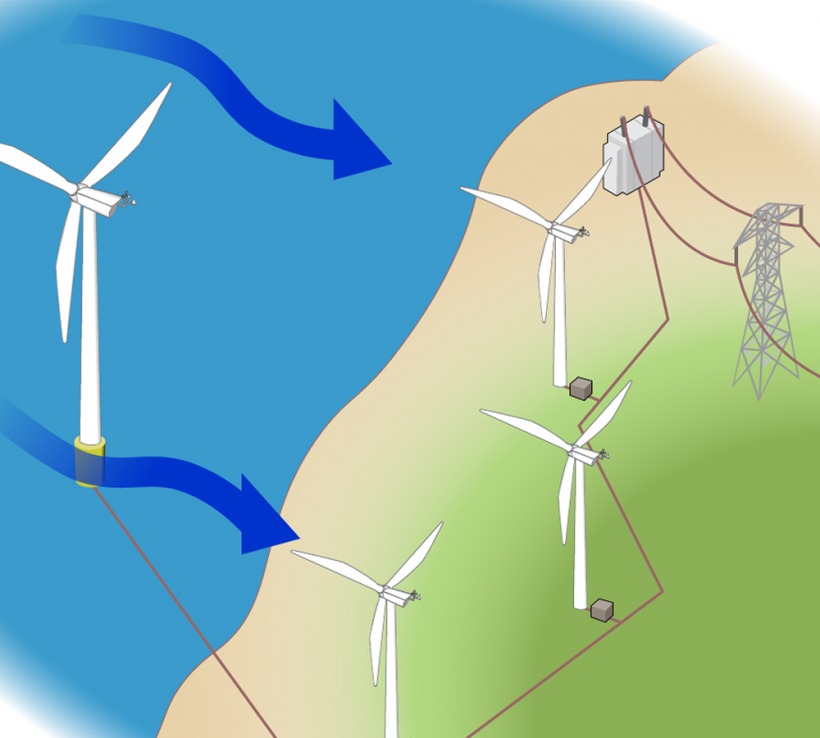Advantages and Challenges of Wind Energy
Wind energy offers many advantages, which explains why it's one of the fastest-growing energy sources in the world. Research efforts are aimed at addressing the challenges to greater use of wind energy. Read on to learn more about the benefits of wind power and some of the challenges it is working to overcome.
Advantages of Wind Power
- Wind power is cost-effective. Land-based utility-scale wind is one of the lowest-priced energy sources available today, costing 1–2 cents per kilowatt-hour after the production tax credit. Because the electricity from wind farms is sold at a fixed price over a long period of time (e.g. 20+ years) and its fuel is free, wind energy mitigates the price uncertainty that fuel costs add to traditional sources of energy.
- Wind creates jobs. The U.S. wind sector employs more than 100,000 workers, and wind turbine technician is one of the fastest growing American jobs. According to the Wind Vision Report, wind has the potential to support more than 600,000 jobs in manufacturing, installation, maintenance, and supporting services by 2050.
- Wind enables U.S. industry growth and U.S. competitiveness. New wind projects account for annual investments of over $10 billion in the U.S. economy. The United States has a vast domestic resources and a highly-skilled workforce, and can compete globally in the clean energy economy.
- It's a clean fuel source. Wind energy doesn't pollute the air like power plants that rely on combustion of fossil fuels, such as coal or natural gas, which emit particulate matter, nitrogen oxides, and sulfur dioxide—causing human health problems and economic damages. Wind turbines don't produce atmospheric emissions that cause acid rain, smog, or greenhouse gases.
- Wind is a domestic source of energy. The nation's wind supply is abundant and inexhaustible. Over the past 10 years, U.S. wind power capacity has grown 15% per year, and wind is now the largest source of renewable power in the United States.
- It's sustainable. Wind is actually a form of solar energy. Winds are caused by the heating of the atmosphere by the sun, the rotation of the Earth, and the Earth's surface irregularities. For as long as the sun shines and the wind blows, the energy produced can be harnessed to send power across the grid.
- Wind turbines can be built on existing farms or ranches. This greatly benefits the economy in rural areas, where most of the best wind sites are found. Farmers and ranchers can continue to work the land because the wind turbines use only a fraction of the land. Wind power plant owners make rent payments to the farmer or rancher for the use of the land, providing landowners with additional income.
CHALLENGES OF WIND POWER
- Wind power must still compete with conventional generation sources on a cost basis. Even though the cost of wind power has decreased dramatically in the past several decades, wind projects must be able to compete economically with the lowest-cost source of electricity, and some locations may not be windy enough to be cost competitive.
- Good land-based wind sites are often located in remote locations, far from cities where the electricity is needed. Transmission lines must be built to bring the electricity from the wind farm to the city. However, building just a few already-proposed transmission lines could significantly reduce the costs of expanding wind energy.
- Wind resource development might not be the most profitable use of the land. Land suitable for wind-turbine installation must compete with alternative uses for the land, which might be more highly valued than electricity generation.
- Turbines might cause noise and aesthetic pollution. Although wind power plants have relatively little impact on the environment compared to conventional power plants, concern exists over the noise produced by the turbine blades and visual impacts to the landscape.
- Wind plants can impact local wildlife. Birds have been killed by flying into spinning turbine blades. Most of these problems have been resolved or greatly reduced through technology development or by properly siting wind plants. Bats have also been killed by turbine blades, and research is ongoing to develop and improve solutions to reduce the impact of wind turbines on these species. Like all energy sources, wind projects can alter the habitat on which they are built, which may alter the suitability of that habitat for certain species.

This aerial view of a wind plant shows how a group of wind turbines can make electricity for the utility grid. The electricity is sent through transmission and distribution lines to homes, businesses, schools, and so on.